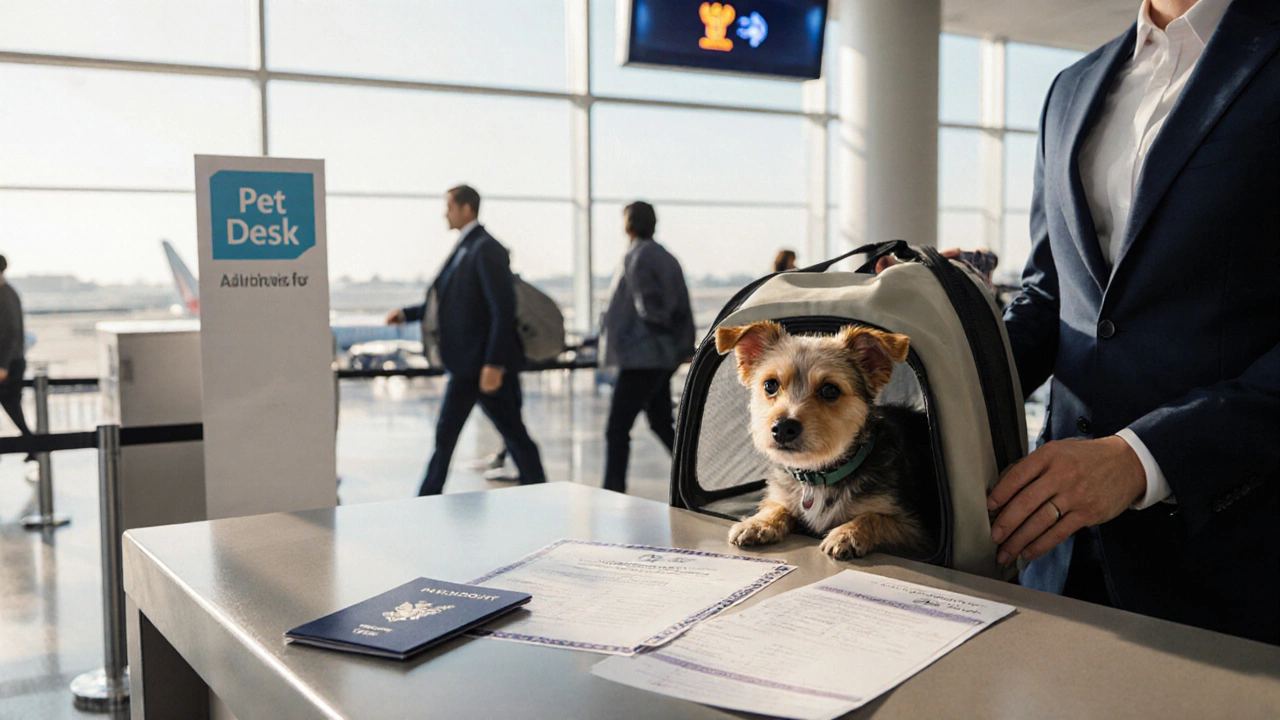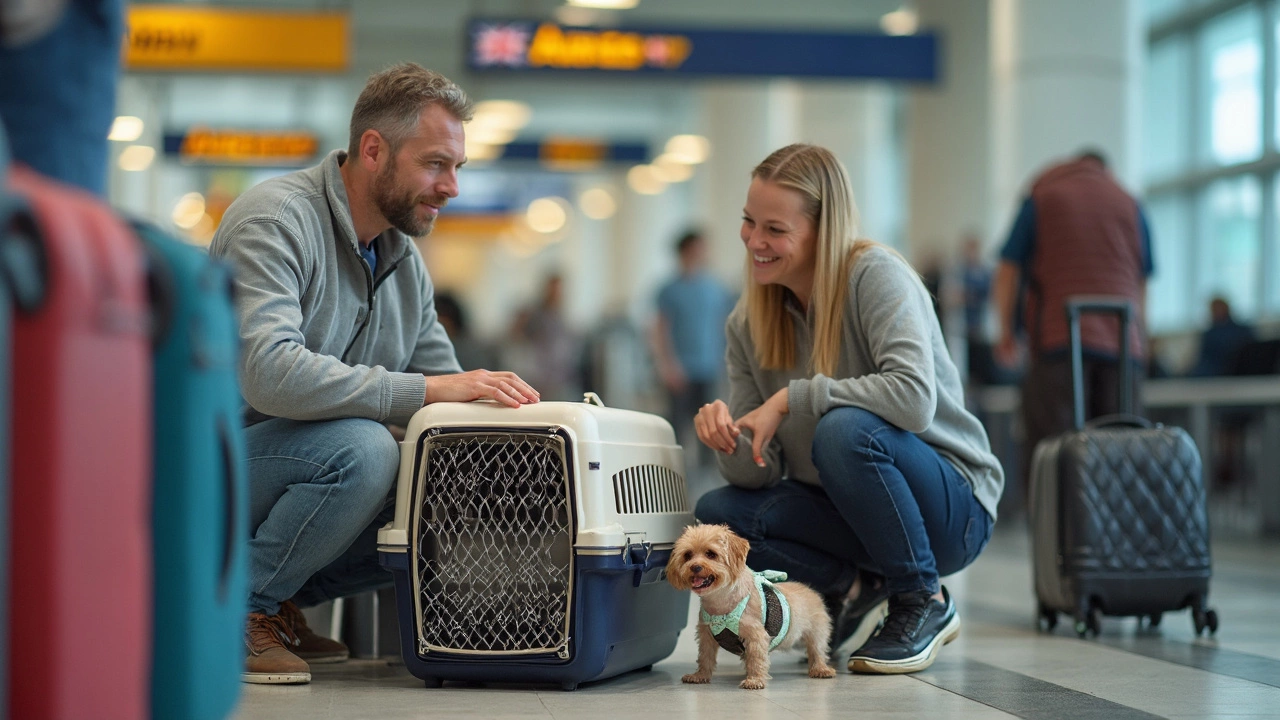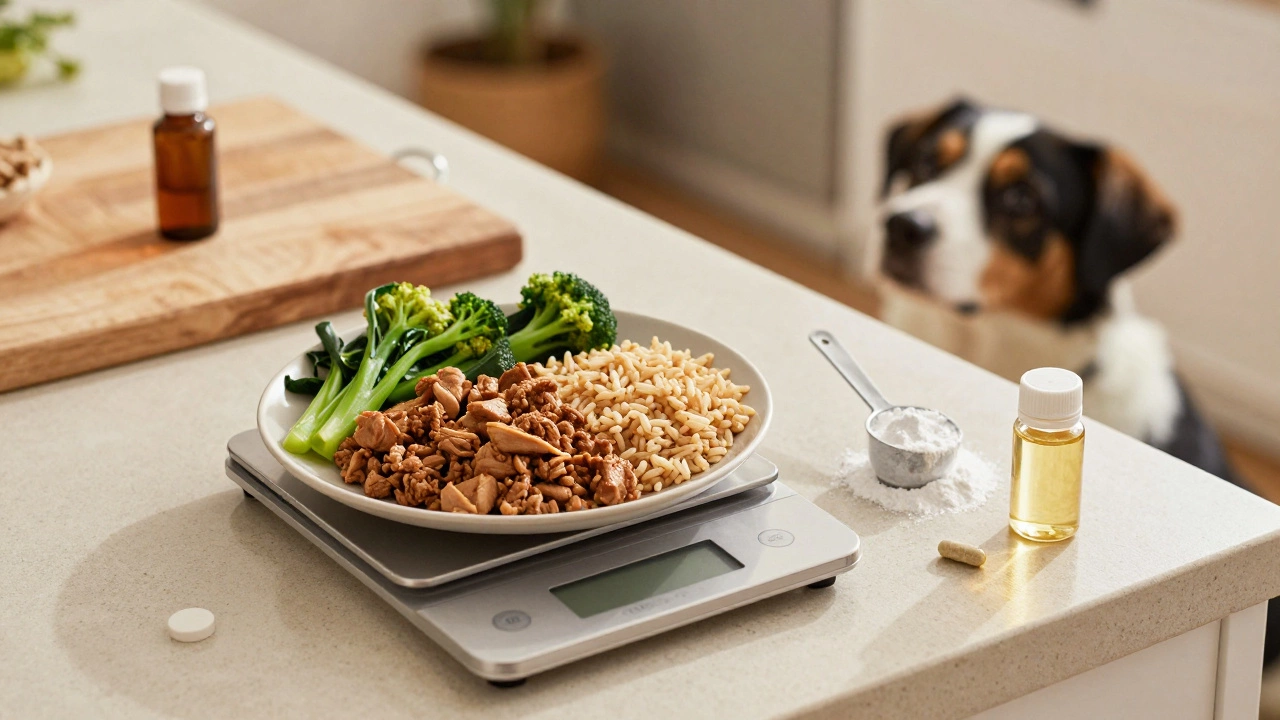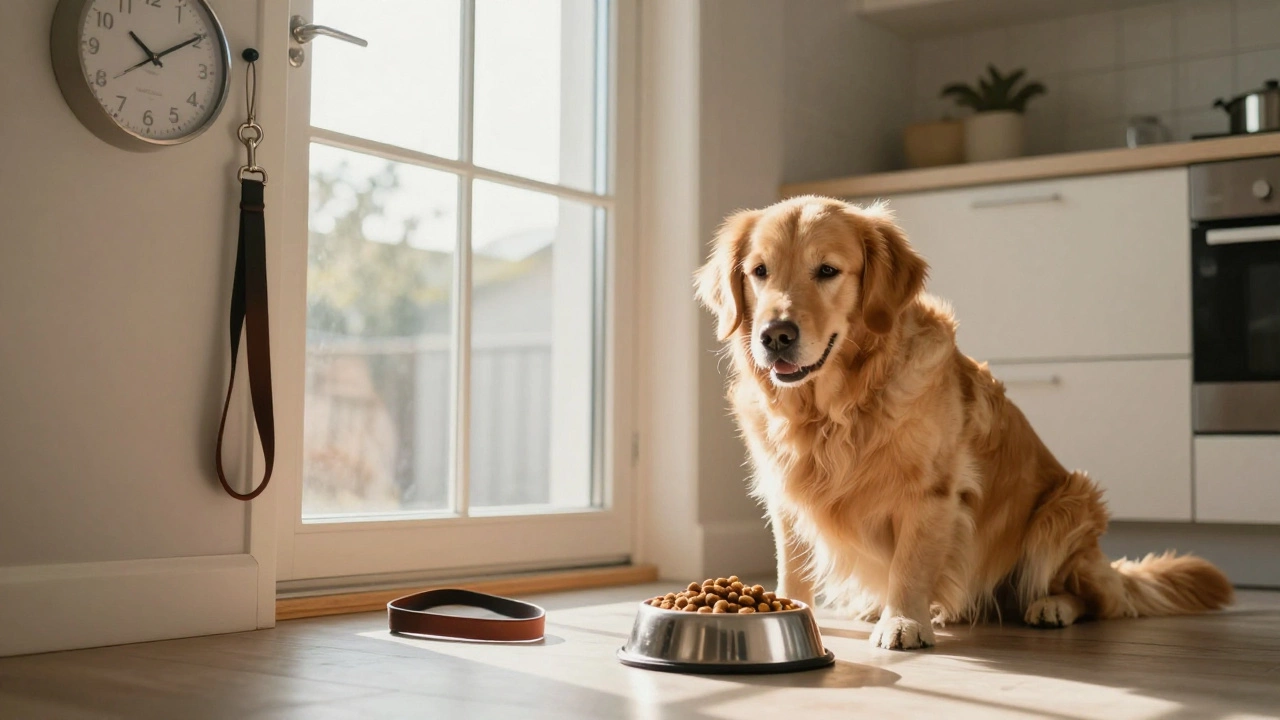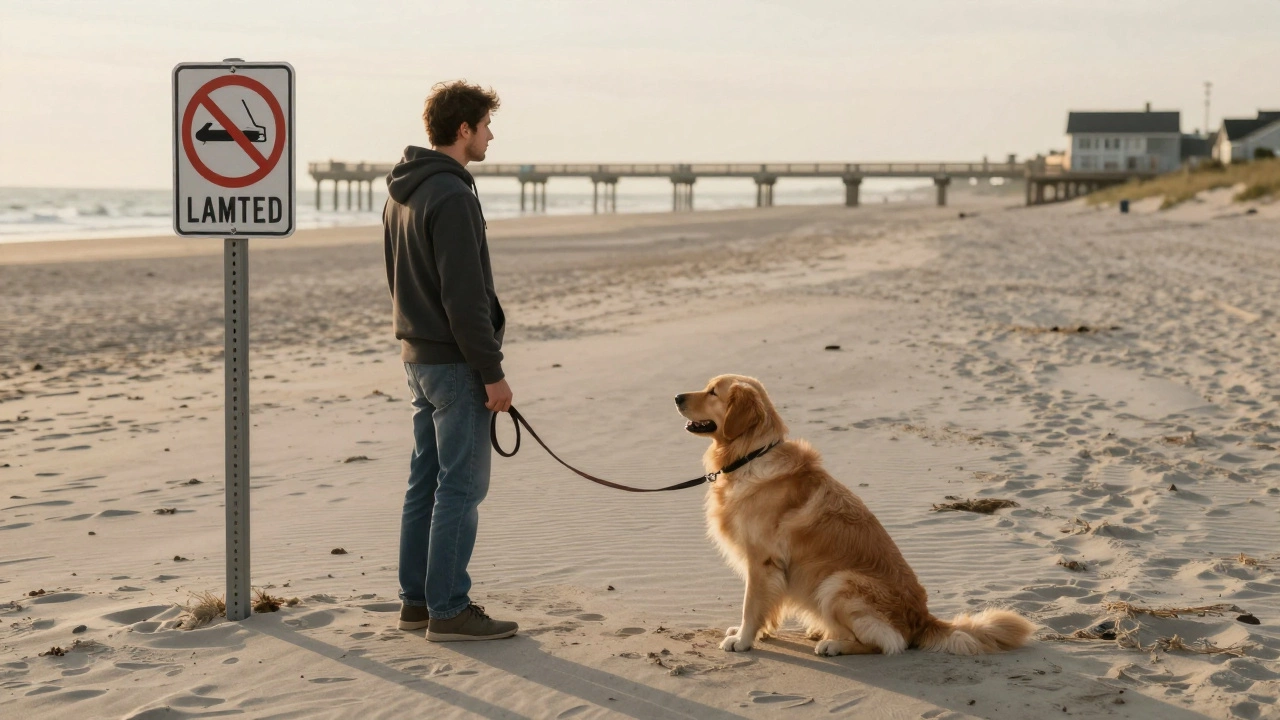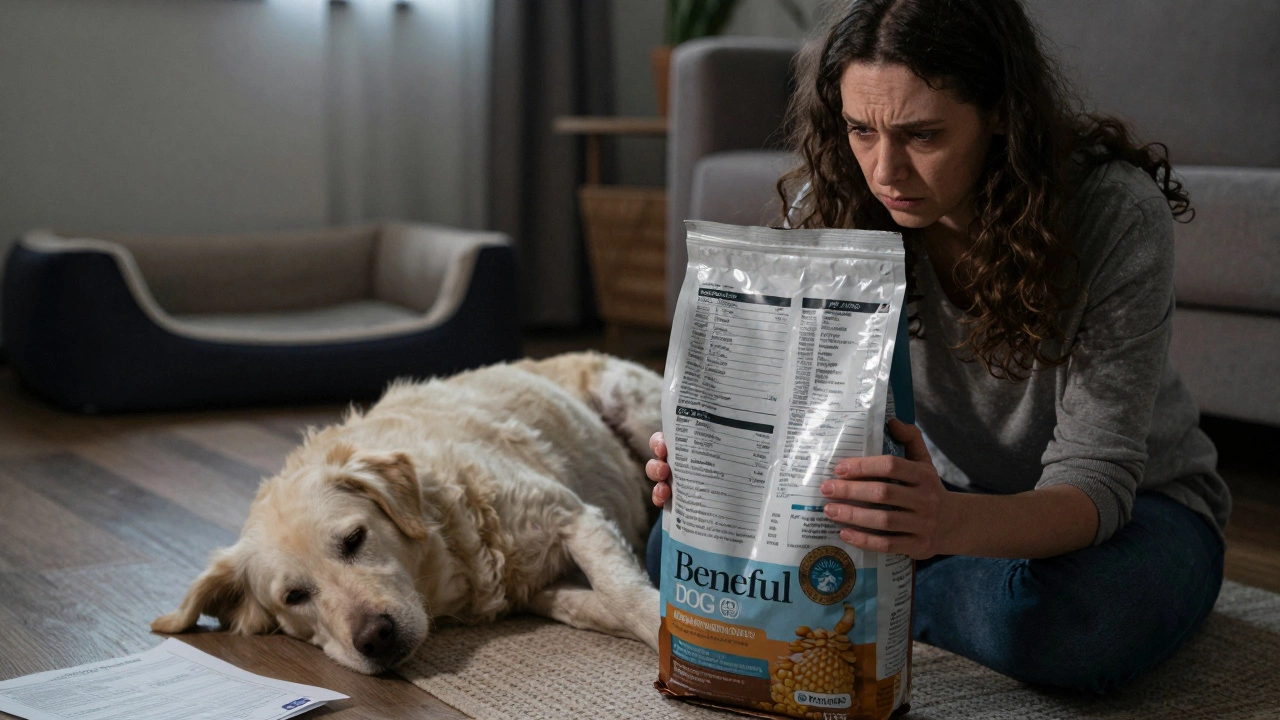Pet Travel Cost Calculator
Calculate Your Dog's Air Travel Cost
Estimate total expenses for flying with your dog in the cabin. Based on current airline policies.
Estimated Cost Breakdown
How to Save Money
Choose soft-side carriers: They're cheaper and often included with ticket purchase.
Book early: Some airlines offer discounts for booking your pet seat with regular ticket.
Check breed restrictions: Brachycephalic breeds can be excluded from cabin travel.
Use existing health certificate: Some vets charge less for a repeat certificate.
Quick Summary
- Most airlines treat dogs as cargo, but a few let you buy a dedicated cabin seat for small dogs.
- Seat purchase usually costs between $75‑$200 per flight, plus carrier fees.
- Key requirements: airline‑approved carrier, up‑to‑date pet passport, health certificate, and reservation well in advance.
- Large breeds must travel in the hold; only dogs under the carrier size limit qualify for a seat.
- Follow our pre‑flight checklist to avoid surprises at the gate.
Wondering if you can actually buy dog seat on plane and keep your pup beside you? The short answer is yes, but only under very specific conditions. In this guide we break down who offers a seat, what you need to bring, how much it costs, and the step‑by‑step process to book it without a hitch.
Airline pet travel is a niche area of aviation that mixes airline regulations, veterinary paperwork, and a dash of logistics. By the end of this article you’ll know exactly when a seat is possible, how to reserve it, and what to expect on the day of departure.
When Can You Actually Buy a Seat for Your Dog?
Only a handful of carriers let you treat your canine like a human passenger. The main criteria are:
- Size limit: The dog and carrier together must fit under the seat‑back in front of you. Most airlines cap this at 18 × 12 × 10 in (45 × 30 × 25 cm).
- Weight limit: Typically 15‑20 lb (7‑9 kg), including carrier.
- Breed restrictions: Aggressive or brachycephalic breeds (e.g., bulldogs, pugs) are often barred from the cabin.
- Health documents: A recent health certificate and, for international flights, an EU pet passport are mandatory.
If your dog fits these specs, you can book a seat much like you would a regular passenger ticket. If not, you’ll have to use the cargo hold or check the dog as baggage where available.
Airlines that Offer a Dedicated Seat for Small Dogs
Below is a quick snapshot of the major airlines that let you purchase a cabin seat for qualifying dogs. Note that policies change, so always confirm before you book.
| Airline | Seat Fee (USD) | Max Carrier Size | Breed Restrictions |
|---|---|---|---|
| Air Canada | $115 (one‑way) | 18 × 12 × 10 in | Bulldogs, Pugs, Shar‑Pei |
| WestJet | $125 | 17 × 11 × 9 in | Any breed listed as "aggressive" by IATA |
| KLM | €100 (~$110) | 18 × 12 × 11 in | Bulldogs, Pugs, French Bulldogs |
| Air France | €105 | 18 × 13 × 10 in | All brachycephalic breeds |
| Delta (US) | $125 | 18 × 12 × 9 in | Bulldogs, Pugs, Shar‑Pei |
Notice that most carriers charge a flat fee per flight, regardless of distance. Some also allow you to bundle the fee with your regular ticket for a marginal discount.
How to Book a Seat for Your Dog
Booking is similar to reserving a passenger seat, but you’ll need to follow extra steps:
- Confirm your dog meets the size, weight, and breed limits.
- Gather the required documents: pet passport, recent health certificate, and any import permits.
- Call the airline’s pet desk directly-online booking rarely includes pet seats.
- Provide the carrier dimensions and confirm the seat fee.
- Ask for a confirmation number that explicitly states "pet seat booked".
- Pay the fee using a credit card; most airlines require payment at the time of reservation.
Do this at least 48 hours before departure for domestic flights and 72 hours for international routes. Seats fill up fast, especially on short‑haul flights where the cabin is already crowded.
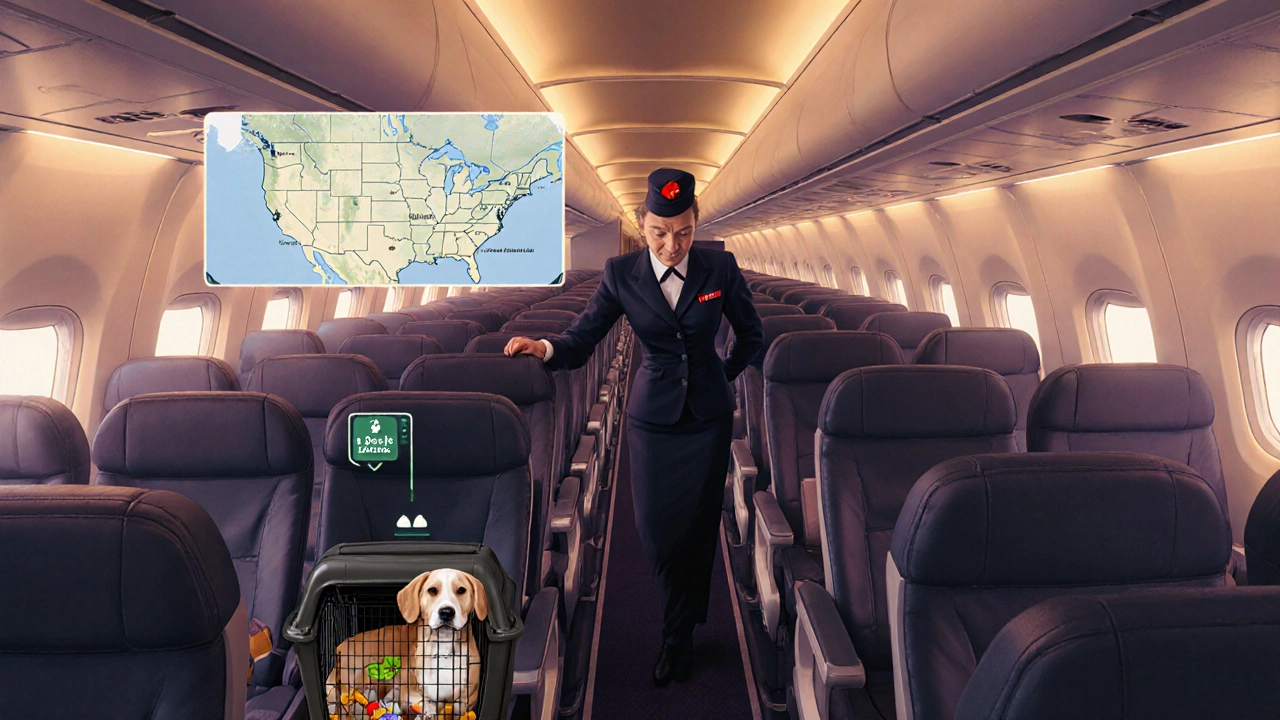
Cost Breakdown: What You’ll Actually Pay
Besides the airline’s seat fee, expect these additional expenses:
- Pet carrier - $30‑$80 for an airline‑approved soft‑side carrier.
- Veterinary health certificate - $25‑$75 depending on your vet.
- Pet passport (EU) - £60‑£120 if you need to obtain one.
- Optional pet insurance for travel - $10‑$30 per trip.
- Airport handling fee (some U.S. airports charge $10‑$20).
All told, a short domestic flight with a seat can run between $150 and $250, while long‑haul intercontinental trips may push $400‑$600 once you add all the paperwork.
Preparing Your Dog for the Cabin Seat
Even if you have a seat, the airline will still expect your dog to stay in the carrier for the entire journey. Here’s how to make that experience smooth:
- Acclimate the carrier: Place a blanket, a favorite chew toy, and a small water dish inside. Let your dog spend 10‑15 minutes in it daily for a week before travel.
- Practice the sit‑stay using the carrier as a cue. The less the dog moves around, the easier the security check.
- Hydration: Offer water right before the flight, but avoid a full bowl to prevent spills.
- Feeding schedule: Feed a light meal 4‑5 hours before departure; a full stomach can cause nausea.
- Identification: Ensure the collar tag lists your phone number and that the microchip registration is up to date.
Also, check the airline’s policy on calming aids. Some carriers accept a vet‑prescribed anxiety medication, but over‑the‑counter products like Benadryl often require a vet’s note.
What to Expect on the Day of Travel
Arrive at the airport early-at least two hours before a domestic flight and three for international. Here’s the typical flow:
- Check‑in: Head to the airline’s pet desk. Show your confirmation, health certificate, and carrier dimensions.
- Security screening: You’ll place the carrier on the X‑ray belt while you and your dog walk through the metal detector. If the dog triggers the alarm, an officer may do a pat‑down.
- Gate boarding: Some airlines let you board early to settle the carrier. Others require you to wait until the general boarding call.
- In‑flight: Keep the carrier under the seat. The flight crew may check that the carrier remains closed and that the dog is calm.
- Landing: Remain seated until the plane reaches the gate. Once the seatbelt sign is off, you can open the carrier to let your dog stretch.
Most passengers appreciate the novelty of a dog on board, but keep noise to a minimum for fellow travelers.
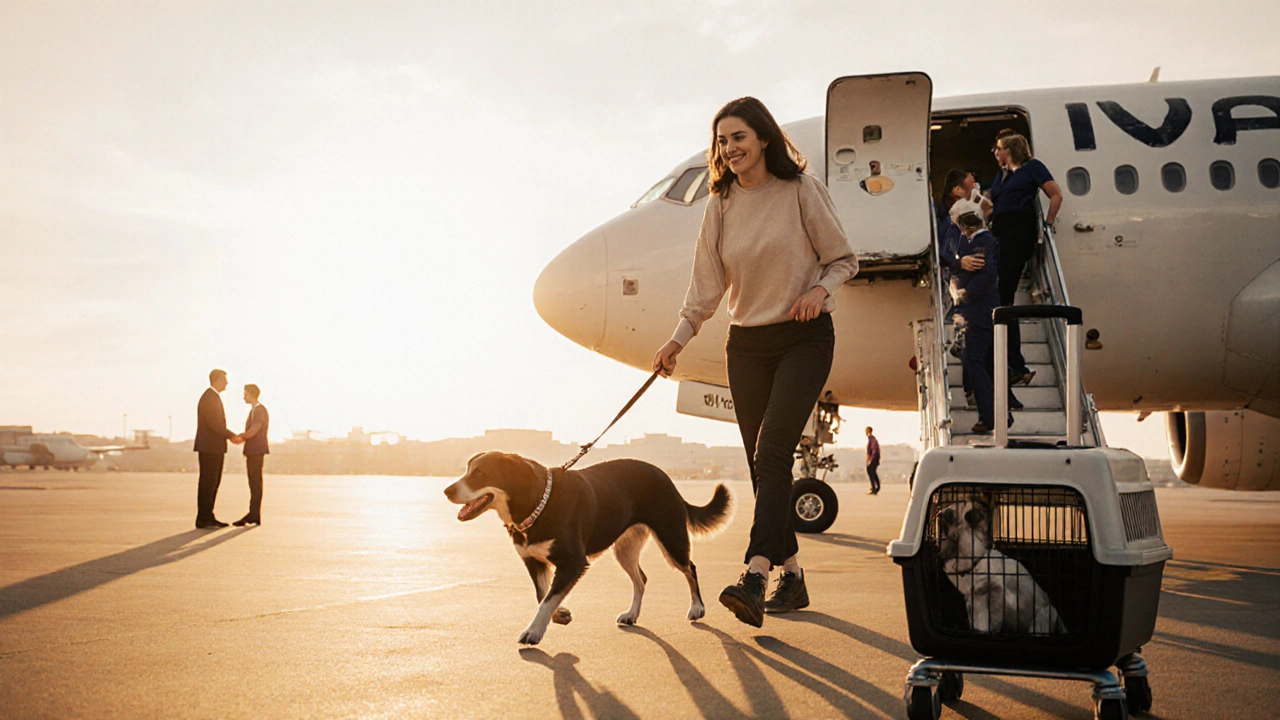
Common Pitfalls and How to Avoid Them
Even seasoned pet owners slip up. Here are the top mistakes and quick fixes:
- Skipping the carrier size check: Always measure the carrier with a tape measure. A carrier that’s a fraction too large will be rejected at the gate.
- Assuming all airlines are the same: Policies vary wildly. For example, Lufthansa does not sell a seat for pets but allows them as checked baggage for a fee.
- Not confirming a seat reservation: A verbal acknowledgment isn’t enough. Get a written confirmation with a reservation code.
- Relying on a single health certificate: Some countries require a certificate issued within 7 days; others allow 10 days. Align with both the departure and arrival nation’s rules.
- Ignoring breed bans: Brachycephalic breeds are often prohibited in the cabin because of breathing concerns at altitude.
Double‑check each of these items on our pre‑flight checklist (see below) to keep stress low.
Pre‑Flight Checklist for Buying a Dog Seat
- Measure dog + carrier; ensure dimensions < 18 × 12 × 10 in.
- Weight under 20 lb (including carrier).
- Confirm breed is allowed on the selected airline.
- Obtain a current health certificate (within 7‑10 days).
- Secure an EU pet passport if flying internationally.
- Call airline pet desk; reserve seat and get confirmation number.
- Pay the seat fee and any ancillary fees.
- Purchase an airline‑approved carrier (soft‑side recommended).
- Pack a travel water bottle, a small blanket, and a chew toy.
- Arrive early; bring documents and carrier for inspection.
If you tick all the boxes, you’ll walk onto the plane with your dog right beside you-no cargo hold, no extra stress.
Alternative Options When a Seat Isn’t Available
Sometimes your dog simply won’t qualify for a seat. Here’s what you can do instead:
- Checked baggage (in‑cabin): Many U.S. airlines let dogs up to 20 lb travel in the cabin without a dedicated seat, but you share space with other passengers.
- Cargo hold: Required for larger dogs. Choose airlines with climate‑controlled cargo and a good track record (e.g., Alaska Airlines, Emirates).
- Pet transport services: Companies like PetSafe or SkyPets handle the entire journey, often offering door‑to‑door service.
Each alternative has its own cost structure and paperwork, so weigh them against the convenience of a cabin seat.
Final Thoughts
Buying a seat for your dog isn’t a myth-it’s a real, albeit limited, option for small, well‑behaved pups. By following the size rules, securing the right documents, and booking early, you can enjoy a hassle‑free flight where your dog sits right next to you. Remember to double‑check airline‑specific policies and keep a copy of every receipt. Safe travels!
Can I bring a large dog in a cabin seat?
No. Cabin seats are only for dogs that, together with their carrier, fit under the seat in front of you-usually under 20 lb. Larger dogs must travel in the cargo hold.
Do I need a pet passport for a domestic US flight?
Domestic flights in the US don’t require a pet passport, but you still need a recent health certificate and an airline‑approved carrier.
How far in advance should I book a seat for my dog?
At least 48 hours before a domestic flight and 72 hours for international routes. Seats fill up quickly, especially on short‑haul services.
What if my dog gets anxious during the flight?
Talk to your vet about a short‑acting anxiety medication. Only use meds that have a vet’s note and are allowed by the airline.
Are there any airlines that let me buy a whole seat for a dog, not just a spot under the seat?
Yes. Airlines like Air Canada and WestJet let you purchase a dedicated cabin seat for a qualifying dog, effectively giving you the same space a human would have.

